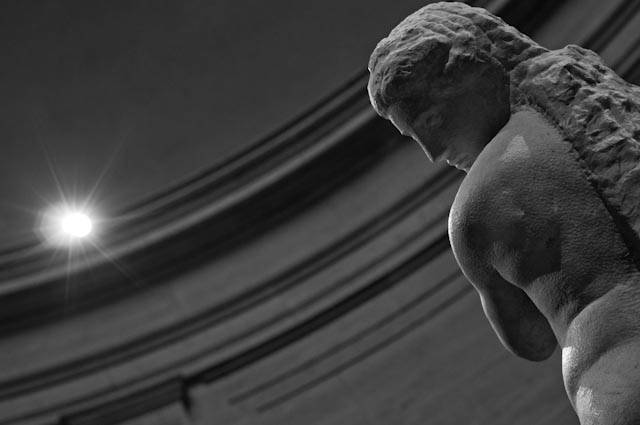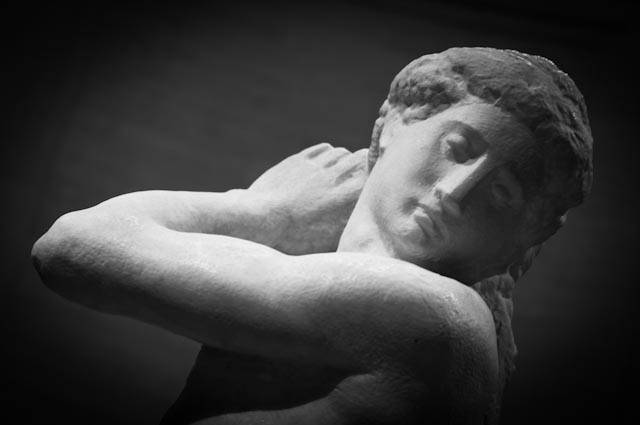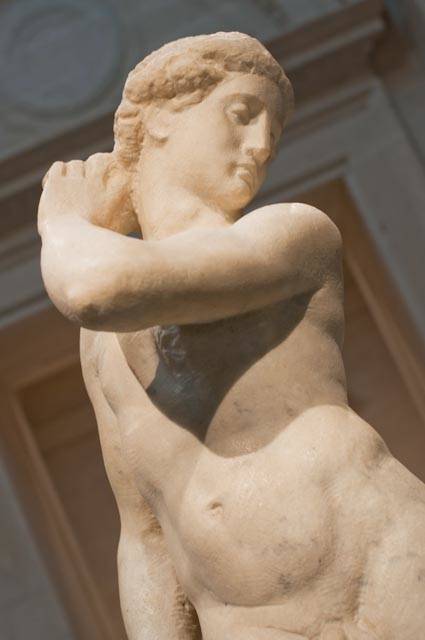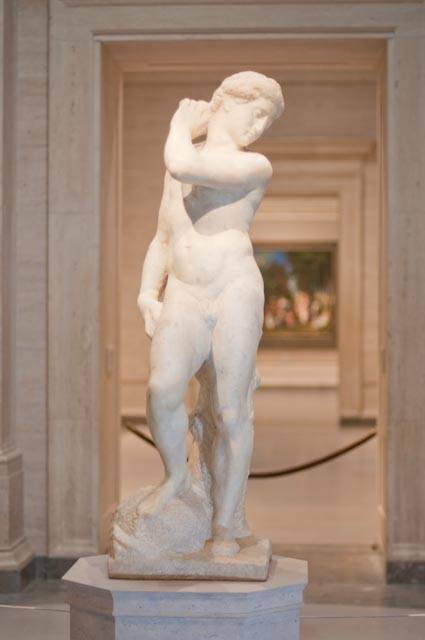Michelangelo's Mystery Man
While a trip to Italy may not be in your budget this winter, you can now easily satisfy your craving for acclaimed 16th century Florentine sculptures without having to leave the country. The newest guest at the National Gallery of Art in Washington D.C. is Michelangelo Buonarroti’s David-Apollo - a work which had previously visited the gallery over a half-century ago, in 1949.
The most recent initiative, “2013- The Year of Italian Culture,” coordinated by the Italian Minister of Foreign Affairs, Giulio Terzi di Sant'Agata, has precipitated the arrival of the marble wonder over the Atlantic, from its permanent home at the Museo del Bargello in Florence, and made it available for Renaissance art enthusiasts in the United States. The idea behind this exhibition is to expose its viewers to the richness of the Italian identity through the country’s culture- its art, music, literature, and more.
Buonarroti’s sculpture is effective in doing so, namely because of the way in which it extends an invitation to the viewer to ponder the mystery of its subject. The history behind the piece, “finished” in 1530, is well- known. The artist, a supporter of the Republican faction in Florentine politics, was forced to forego his partisanship in light of the growing Medici power. In order to gain the favor of Duke Cosimo I, Buonarroti created the David- Apollo for Baccio Valori, a governor associated with the Medici regime.
The sculpture’s role as a middleman for strengthening international relations was augmented after World War II, when it was brought to America to bolster cultural ties between the two countries. However, the identity of this “middleman” has never been confirmed, and for this reason it remains another one of Michelangelo’s “imprisoned souls”- one which the artist had almost succeeded in releasing. Were it not for two significant features, the marble man would be liberated from this eternal identity crisis, though this would come at the expense of the viewer’s participation in the guessing-game that makes the work so compelling.
The sculpture’s “spiraling pose,” also known as “serpentinata,” is not unusual among works from this time, and therefore would warrant both hypotheses as to the subject. The enigma lies in the unfinished portion of marble under the statue’s right foot- is it Goliath’s head (as would make sense in the case of the Biblical David) or an ordinary slab of stone? More interestingly, is the unchiseled shape on the man’s back representative of the sling of David, Florence’s adopted guardian against tyranny, or is it perhaps a quiver, where the Greek deity Apollo would have stored his arrow?
While Duke Cosimo I’s inventory supports the former proposition and art historian Giorgio Vasari leans towards the former solution, it is ultimately up to the viewer to decide. Don’t delay-take your turn playing detective this season-before the exhibition ends in March 2013.







































i-Italy
Facebook
Google+
This work may not be reproduced, in whole or in part, without prior written permission.
Questo lavoro non può essere riprodotto, in tutto o in parte, senza permesso scritto.